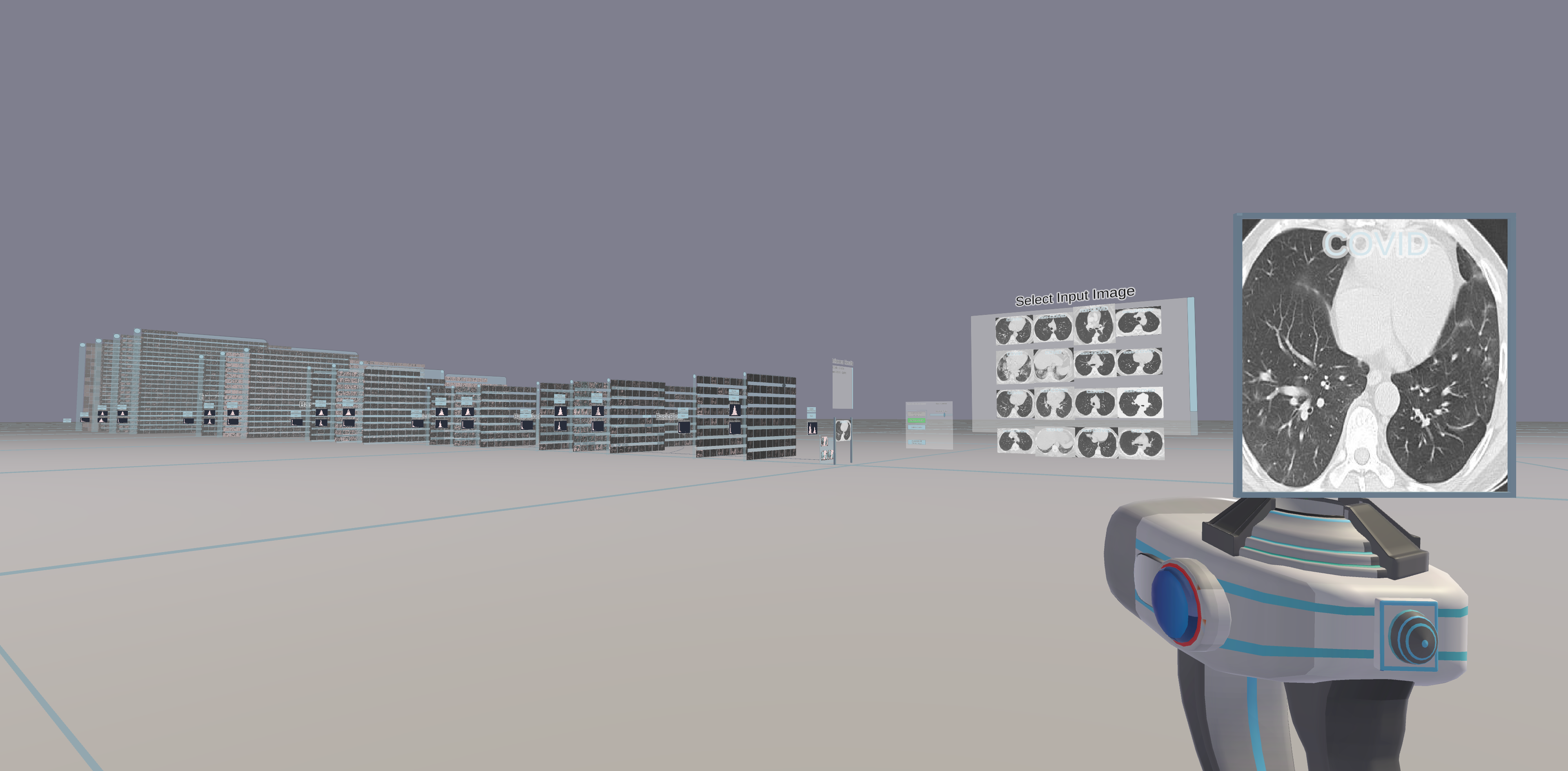The DeepVisionVR project visualizes deep convolutional neural networks (CNNs) in 3D. Take a walk in your CNN and interact with it to get a more intuitive understanding of Deep Learning or to analyze your models.
This repository contains the server part of the project, which handles the artificial neural networks and provides the client with data. The server can be run in Docker. A Dockerfile is included in the repository. The Client can be found HERE.
For running the server you will need a Python environment that fulfills the specifications in the provided Dockerfile. We recommend to use Docker. Please install Docker and NVIDIA-docker. Then, build a docker image with the Dockerfile provided in the repository by executing bash build.sh On Windows I recommend to run the server in Windows Subsystem for Linux (WSL) because I had problems to get GPU access in Docker Desktop.
Download the data needed for the demo from HERE and extract it to DeepVisionVR/DeepLearningServer/Datasets/Caltech This folder should contain the 101 folders with images of different classes. Delete the BACKGROUND_Google folder, because it will confuse the trained network that comes with the demo.
In order to start the server you may have to modify DeepVisionVR/DeepLearningServer/Projects/Demo/start_falcon_server.sh such that it matches the directory structure on your machine. Simply change the left side of the double colon to the absolute path to the DeepLearningServer directory. -v /your-absolute-path/DeepLearningServer:/DeepLearningServer
Then execute bash start_falcon_server.sh
Start the Client after the server has been started.
Duplicate the demo project folder in DeepVisionVR/DeepLearningServer/Projects Then, simply replace the network or the dataset as you wish. The dataset is a Pytorch dataset object.
However, the network needs some small modifications to be able run with DeepVisionVR. The software expects the network to be a Pytorch model. The model has to contain a method called forward_features just like the model in the demo. Then, for each layer in the network that should be visualized by DeepVisionVR, you have to add a TrackerModule layer. The TrackerModule layer functions as an Identity module in Pytorch and is used to mark locations within the network where feature maps should be recorded. See the Code of the demo network for more details. Currently, CNNs for image classification and segmentation are supported.
